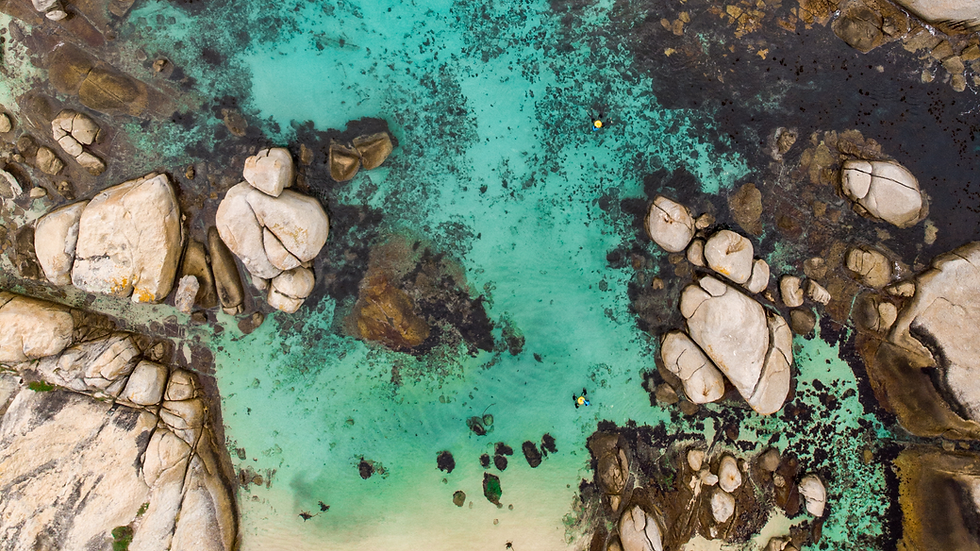WORLD TURTLE DAY: 23 MAY 2022
- IAmWaterFoundation

- May 23, 2022
- 2 min read
WORLD TURTLE DAY
Written by Martine Viljoen – I AM WATER Lead Co-ordinator & Two Oceans Aquarium Education Foundation Social Media and Communications Coordinator who is embedded in their Turtle Rehabilitation team to share impactful conservation stories.
Worldwide, seven species of sea turtles grace our oceans waters, with nearly all these species classified as threatened or endangered. Their endangered status and declining population highlights the importance of our Turtle Rescue, Rehabilitation & Release efforts.
The Two Oceans Aquarium Education Foundation in Cape Town have received five of these seven species in their Turtle Rehab; those found nesting (leatherbacks and loggerheads), visiting to feed (green and hawksbill) and those passing further offshore (olive ridley) of our South African coastline. With loggerhead & green turtles being their most frequently received patients.
Sea turtles are known to be found on land only when they are hatching or nesting, with males therefore never returning to shore following their sprint to the ocean post hatching.
Therefore if you see a stranded turtle, it means they require urgent help. We have Turtle Rescue Network points set up along the South African coastline and our Rescue Hotline (083 300 1663 ) in place to ensure safe transport of larger turtles/hatchlings to our rehab facilities. Allowing them to receive appropriate medical treatment with the goal of the Turtle Rehab to rehabilitate with the purpose of release.
THE JOURNEY OF A HATCHLING
In March to July every year, in South Africa we have our Hatchling Stranding Season. You may be asking why we receive so many of these hatchlings stranding along our coastline?
Loggerhead turtles nest along the northern KwaZulu-Natal coast during summer months, with thousands of hatchlings entering the warm and very fast flowing Agulhas current during January and February.
These hatchlings face a number of threats during their first dash to the ocean (ghost crabs and seabirds) and whilst drifting out at sea (fish, plastic and intense weather).
Drifting in the warm current many of these hatchlings are carried too far down the coast and are swept into the cooler waters of our south coast. This results in hatchlings washing up on our beaches, often found in a weak condition, having been exposed to our cold water & suffering from dehydration.
These hatchlings usually stay with the aquarium Turtle Rehab team until after winter, giving them enough time to heal and grow in size and strength to be released back into the ocean when our waters are warmer.
WHAT YOU NEED TO DO TO BE A TURTLE RESCUER
Find out what to do if you find a sea turtle hatchling
Don’t put the turtle back into the water, as it may drown
Put the turtle in your rescue tub or box with dry towel
Keep out of direct sunlight & wind
Contact your nearest Turtle Rescue Hotline (in South Africa it is: 083 300 1663) OR take it to the nearest Network Point
Head on over to to Two Oceans Aquarium Education Foundation to learn more about the turtles and find out how YOU too can support their rehabilitation work .









Comments